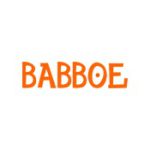Creating a manual in 10 steps according to Manualise
A number of elements are almost always present in the creation of any manual. A good understanding or approach to it contributes to the quality of the manual. The following list briefly describes these elements.
1. Create a manual? Know your target audience!
Product information should be communicated to the user or target audience in an accurate and effective manner. Here it is important to know that each target group has its own characteristics, which must be taken into account when creating the manual. For example, an average consumer has very different characteristics than the installer of a water treatment machine, for example. This results in a different approach.
Creating a manual usually involves talking to multiple experts, such as engineers (mechanical engineers, electrical engineers, industrial designers), installers, maintenance engineers, marketing experts, etc. All of these experts provide information about the product. And all these experts use their own jargon. When creating the manual, the trick is to communicate all this information to the intended target audience in such a way that they understand it, without having to compromise the factuality of the information.
Furthermore, the following applies to every user and to the creation of every manual:
- Eliminate redundant info. Write to the point. Or as Albert Einstein said, “Everything should be made as simple as possile, but not simpler.”
- The user should have to exert as little effort as possible (but a little is allowed according to the principles of minimalism)
- Navigation is important. Table of contents should clearly indicate what information will be found on the respective page. Headings should make clear why the user should invest time to read that section. For example, use a heading such as How to connect to a device instead of Bluetooth Connectivity.
2. Research the relevant guidelines
The Product Liability Directive 85/374/EEC protects consumers from damages resulting from a defective product. When a product is defective, the manufacturer (or importer) can be held liable. A manual is considered an integral part of the product. Thus, an insufficiently effective manual may mean that the product is judged defective.
In addition, CE directives require that any residual risks of a product be described in a manual. Therefore, it is essential to be aware of the guidelines applicable to the product. If these guidelines are known, it can be deduced what should be taken into account when creating the manual. Among other things, the Machinery Directive requires that both intended use and foreseeable misuse be included in the manual. In addition, information on noise level, stability, manufacturer, etc. should be included. The Machinery Directive and a number of other directives also have requirements for translations of the manual.
3. Determine the format of the manual
A manual should be comprehensive and encourage proper and safe use. Often guidelines require certain elements to be included. In many cases, the guidelines also leave room for further personal interpretation. a guide for creating a good manual is through the use of standards. The NEN5509 is the Dutch standard for user manuals. This standard describes the content, structure, wording and presentation of manuals. It describes a format that should be present in a good manual. Minimum items to be included according to the standard include, for example, a section on safety warnings, technical specifications, installation, operation and maintenance. But the standard also sets minimum requirements for such things as the title page or preface and font size.
4. Collect product information
Creating a manual involves gathering as much product information as possible, such as technical specifications, installation plans, marketing documentation, any available CAD files, etc. This information is acquired by speaking to experts within relevant organisations. The art is to listen carefully, analyse and understand the information, ask questions to confirm thoughts and be able to select.
5. Write effective and instructional texts
Once all the information has been collected and selected, it can be used for text generation. Constant awareness of the target audience for which the manual is created is essential. Indeed, the information should be communicated comprehensibly to the target audience. In general, the existing product information should also be edited. In fact, it is often the case that marketing texts are not accurate enough and technical descriptions are not understandable enough for the target audience. The principles of minimalism and Simplified Technical English (STE) can help convey information more effectively and accurately. When STE is used correctly, it provides a company with all the benefits of standardisation: Uniformity, increased productivity and cost savings. Application of minimalism reduces training time by about 30% and improves the user’s ability to take in information by 25%.
6. Making the manual short and concise (reduce) text
No one wants to read a lot in a manual, and no one is eager for high translation costs. Illustrations replace words, tell more than (1000) words and, of course, need not be translated. The STE discussed earlier also reduces text. Sentences often contain unnecessary words and information. By applying the principles from the STE standard (the ASD-STE100), all redundancy is eliminated yielding, on average, a reduction of up to 30%.
7. Creating illustrations/animations for the manual
In addition to illustrations reducing text, instructions become much clearer through a picture than from just a description in words. Assembly and installation instructions can usually be completely substituted for pictures, creating an IKEA-style manual. Avoid using photographs in a manual. Sometimes manuals are copied, drastically reducing the quality of a photograph. In addition, a photo contains too much redundant information, making it unclear. When creating a good illustration, one can choose which product information or details to omit so that attention can go entirely to the intended action. Illustrations also make for a friendly-looking manual that is more pleasant to read. Incidentally, the CAD files used to create illustrations are also increasingly used to create 3D animations that explain the use of a product. A QR code on a machine part can thus instantly connect the repair technician with an animation on how to replace that part.
8. Translate/localise
Because of internationalisation, a manual often needs to be translated. Sometimes the decision to translate is made for the sake of good and user-friendly product support and sometimes purely to comply with legislation. Translation is a profession in its own right, which is why the translation agency should be chosen with care. Having knowledge of the subject matter and consistent language are important aspects. For repetitive projects, the translation agency can call on translation memory. Proper management of translated texts can also encourage reuse, saving significant costs.
9. Organising and documenting
There are many programs for smartly creating and managing manuals. Some of these so-called authoring/editing/publishing programs are Autor-it, MacCap Flare and FrameMaker These packages are strong in organising information. This means that information can be stored modularly to encourage reuse. We at Manualise have also developed proprietary software to store text modules. This software better suits the higher requirements of some of our clients in terms of the graphic design of the manual.
10. Generate output (create the actual manual)
The product information is converted into a manual using software tools. We distinguish three forms of output, namely print, online and on device. For online and on device manuals, in addition to using 2D drawings, 3D animations can also be used.



